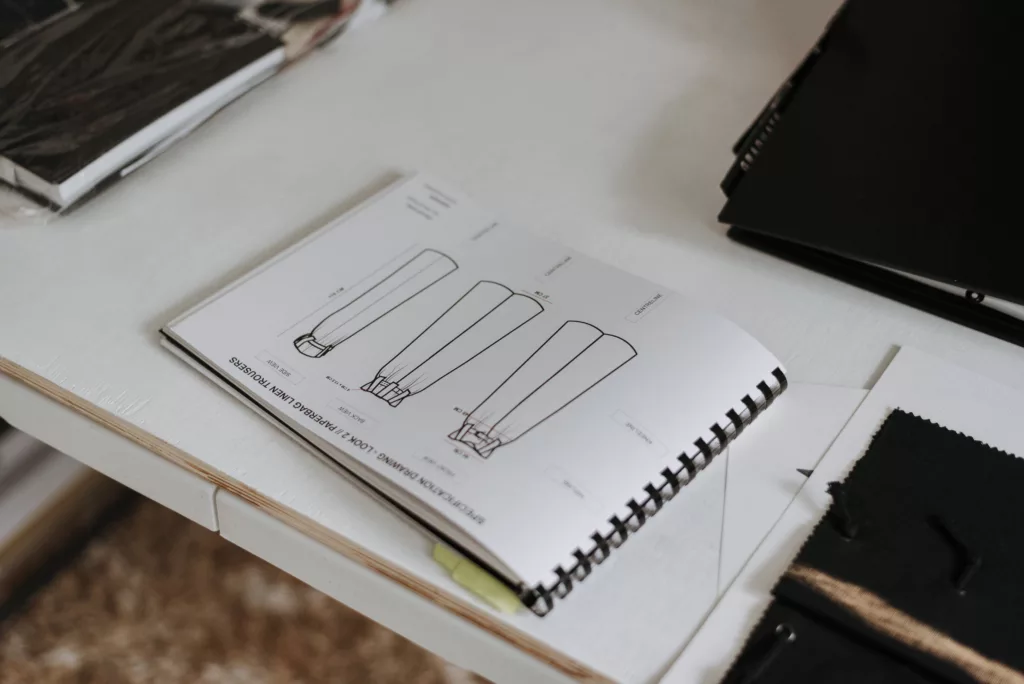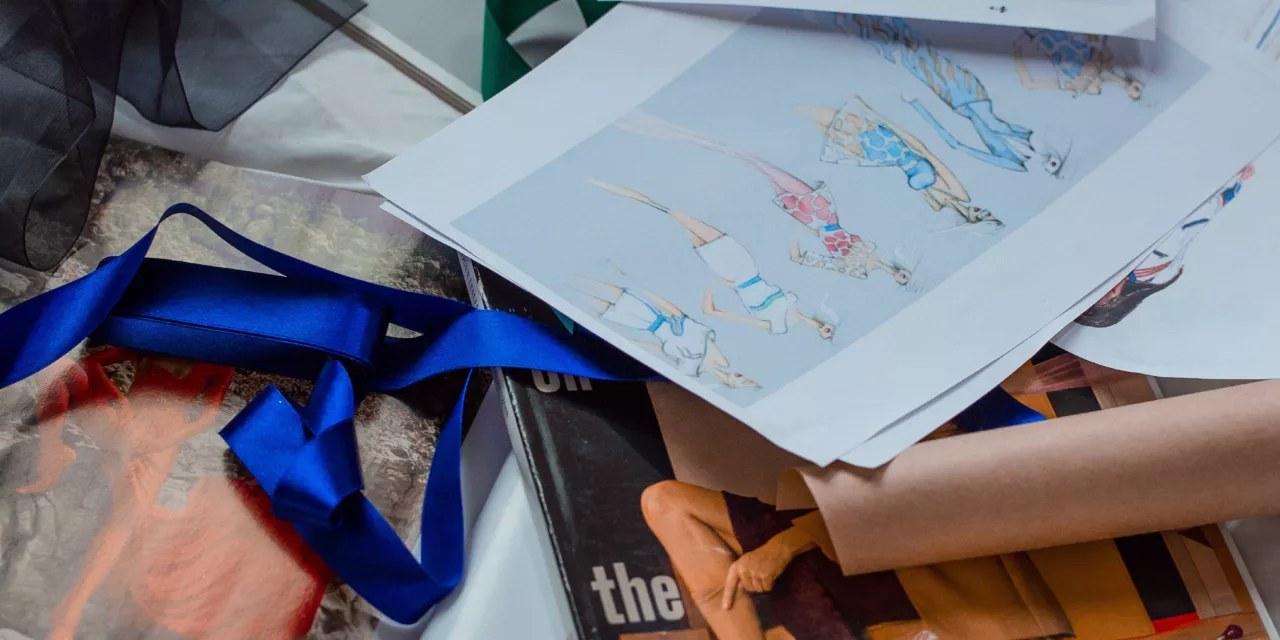Fashion design sketches are an essential part of the creative process for fashion designers. These sketches serve as a visual representation of their ideas and designs before they are brought to life on the runway or in clothing stores.
There are 3 Types of Fashion Design Sketches
· Drawing fashion sketches
· Drawing fashion illustration
· Drawing clothes sketches
What is drawing Fashion Sketch & how to draw it?
The fashion sketch is an important part of the design process. It captures the mood and feeling of the fashion show and it also helps with the development of a new collection or line.
There are many different ways to draw a fashion sketch and it is up to you which technique you choose. The most important thing is that you are comfortable with your chosen technique and that it suits your style of drawing.

Drawing a fashion sketch can be fun, challenging, and rewarding all at once. You don’t need special skills or knowledge; follow these simple steps for success!
The first step in any drawing process is to get to know your subject matter, so be sure to do your research before starting on any sketches.
This is where you’ll want to find your subject’s personality, likes and dislikes, favorite colors, and anything else that will help you know how to draw them.
The Importance of Drawing Fashion Sketches
Drawing fashion sketches is a crucial and fundamental aspect of the fashion design process. Here are several reasons why drawing fashion sketches is important:
- Visualization of Ideas:
- Fashion sketches allow designers to visualize and convey their creative ideas. It serves as a medium through which designers can translate their thoughts into tangible representations.
- Communication Tool:
- Fashion sketches act as a universal language in the fashion industry. Designers use sketches to communicate their concepts and designs to other team members, including pattern makers, manufacturers, and clients. Clear and detailed sketches help in avoiding misinterpretations.
- Design Development:
- Sketching is an integral part of the design development process. It enables designers to experiment with various shapes, styles, and details before committing to a final design. This iterative process helps refine and enhance the overall concept.
- Pattern Making and Construction:
- Fashion sketches serve as a blueprint for pattern makers and garment construction teams. Detailed sketches provide essential information about proportions, seams, and other design elements, ensuring the accurate translation of the design into a wearable garment.
- Portfolio Building:
- Fashion designers often showcase their work through portfolios. Well-executed fashion sketches are essential components of a designer’s portfolio. A strong portfolio can significantly impact career opportunities, whether it be for securing a job, attracting clients, or gaining admission to a design program.
- Client Presentation:
- When working with clients, fashion sketches play a crucial role in presenting design concepts. Clients may not have the same technical understanding of patterns and fabrics, so sketches become a visual representation of the proposed designs.
- Creative Expression:
- Sketching is an essential tool for designers to unleash their creativity and showcase their unique style.
- It is a form of artistic expression that captures the essence of a design concept and conveys the designer’s unique vision.
- Quick Prototyping:
- Sketching is a rapid and efficient way to generate design ideas. Designers can quickly sketch out multiple concepts, allowing for the exploration of various possibilities before committing to a final design.
- Decision-Making Tool:
- Fashion sketches help designers make informed decisions about the overall design, fabric choices, color palettes, and embellishments. Seeing the design on paper facilitates critical decision-making in the design process.
- Historical Documentation:
- Fashion sketches play a crucial role in documenting a designer’s creative journey, serving as a valuable historical record of their work.
- They document the evolution of ideas and styles over time, providing insights into the designer’s creative journey.
In summary, fashion sketches are a foundational and multifaceted tool in the fashion design process, serving both practical and creative purposes. They facilitate communication, aid in design development, and contribute to the overall success and impact of a fashion designer’s work.
How to Draw Illustration Design Sketcher
This article will guide you through the process of drawing a sketch design for an illustration.

A sketch is a quick drawing that can be done in mere seconds. Sketches are often rough and simple, but they serve as a great way to get your ideas down on paper before you move on to more detailed drawings. Sketching is a great way to quickly brainstorm ideas and figure out what you want your final illustration to look like.
Below are some tips on how to draw an illustration design sketcher:
1) Start by drawing two diagonal lines that intersect at the center of the page, one vertical and one horizontal line.
2) Draw two more diagonal lines from the intersection point, one vertical and one horizontal line again. This will create four boxes in total; two large ones and two small ones.
3) Draw four more diagonal lines from the intersection point, this time all vertical or all horizontal lines (depending on which you drew first).
4) Draw two more intersection points between the two diagonal lines, for a total of six.
5) Repeat steps 2-4 with each of the vertical and horizontal lines from these new intersection points.
6) Draw four more diagonal lines from the new intersection point.
7) Draw three horizontal lines (or three vertical lines).
8) Draw one to four more intersection points depending on how long you want your diagram to be, to make a circle.
9) Draw an arc with the appropriate radius to connect each new point you drew with the previous intersection point.
10) Connect each of your arcs with one final arc to complete the circle.
The Importance of Understanding Fashion Illustration Sketches
The fashion industry is a highly lucrative and competitive field, with fashion illustrators playing a crucial role in creating sketches for designers and companies. Being a part of this industry requires exceptional talent and skills to thrive in this challenging environment.
These sketches serve multiple purposes, serving as a source of inspiration for future designs and a means of effectively communicating client preferences. They are an invaluable tool in the creative process.
Fashion illustrators expertly utilize a blend of pencils and pastels to bring their sketches to life, showcasing their creative prowess and attention to detail.
Designers love the illustrated look created by this, as it adds a unique touch to their designs. However, it can be challenging for those not familiar with the fashion industry to fully grasp the intended message.
This article will explore how fashion illustrators work, why people must understand them, and how you can learn more about this field if you’re interested in becoming a fashion illustrator yourself.
How to Create Fashion Illustration Style with Pencils?
Pencils are a common tool that artists use to create fashion illustrations. They are usually used in conjunction with markers and paint. This article will provide some tips and techniques for drawing fashion illustrations with pencils.
1) Prepare the Drawing Surface:
Fashion illustrations can be created on various surfaces, not just paper. Cardboard, fabric, and other materials can also be used. It’s important to choose a surface that is large enough to accommodate the size of your desired illustration. Get creative with your canvas!
2) Draw a Sketch:
Sketch your desired illustration on the surface before you start to work on it with pencils. This will ensure that you get the proportions right before you start adding detail to it. You can use this sketch as a guide for drawing your illustration later to keep it consistent with your original idea.
Sketching is a valuable tool that allows you to spot and rectify any mistakes or errors in proportions before they become prominent in your work. By taking the time to sketch, you ensure a polished final product without any unwanted flaws.
How to Draw Clothing Designs on Sketcher
Drawing clothing is an essential aspect of the design process. Designers must possess the ability to envision garments on individuals and translate their ideas onto paper. However, this task can sometimes be challenging. One technique that can assist you in this endeavor is known as “draping.”
Draping is a technique that involves using fabric to create a 3D sketch of your design. It helps you visualize how the finished garment will look when worn and how it will drape on the body.

You have the flexibility to use any type of fabric, but I highly recommend opting for muslin. It is not only lightweight and inexpensive, but also incredibly easy to work with.
Step 1: Gather your materials – a piece of muslin fabric (approximately 2 yards), pins, scissors, and a measuring tape.
Step 2: Cut the fabric into two halves so that you have two pieces about 1 yard long.
Step 3: Lay one piece flat on your work surface.
Step 4: Put one end.
The Importance of Understanding Fashion Clothes Sketches
Fashion sketches play a vital role in the fashion design process as they enable designers to visualize their ideas and effectively communicate them to others.
A sketch is a visual representation of an idea, which can take the form of a drawing, painting, or model. Fashion sketches, specifically, are drawings used to showcase the anticipated appearance of the final product before it is created.
Designers utilize sketches to gather feedback from their team and refine their designs prior to commencing the product creation process.
How to Draw Clothing Sketches with Pencils and other Materials
Drawing sketches can be done on any surface and with any material. The only requirement is that you have a pencil, pen, or marker and some paper.
The process of sketching can be broken down into three steps: understanding the garment, sketching the garment, and refining the sketch.
The first step is to understand the garment, which involves familiarizing oneself with both sides of the fabric and how it appears when worn.
The second step involves sketching your understanding of the garment using your chosen medium. This can be done by making marks on a piece of paper or utilizing computer programs like SketchUp or Adobe Illustrator.
The third step is to refine your sketch to have accurate measurements, proportions, and details such as pockets and buttons.
Conclusion: Use Sketches To Your Advantage And Supercharge Your Designs
Sketches are often overlooked in the design process, but they have a lot of potential to make your designs more unique and distinctive.
Sketches should be used as a tool to explore various possibilities for your design ideas. They can be used as a starting point for your project and you can use them to generate more ideas or refine the ones you already have. Sketches are great because they are easy to edit and change, making them perfect for experimenting with different styles or testing out new concepts. This flexibility allows you to save time and effort by quickly iterating and refining your ideas.





